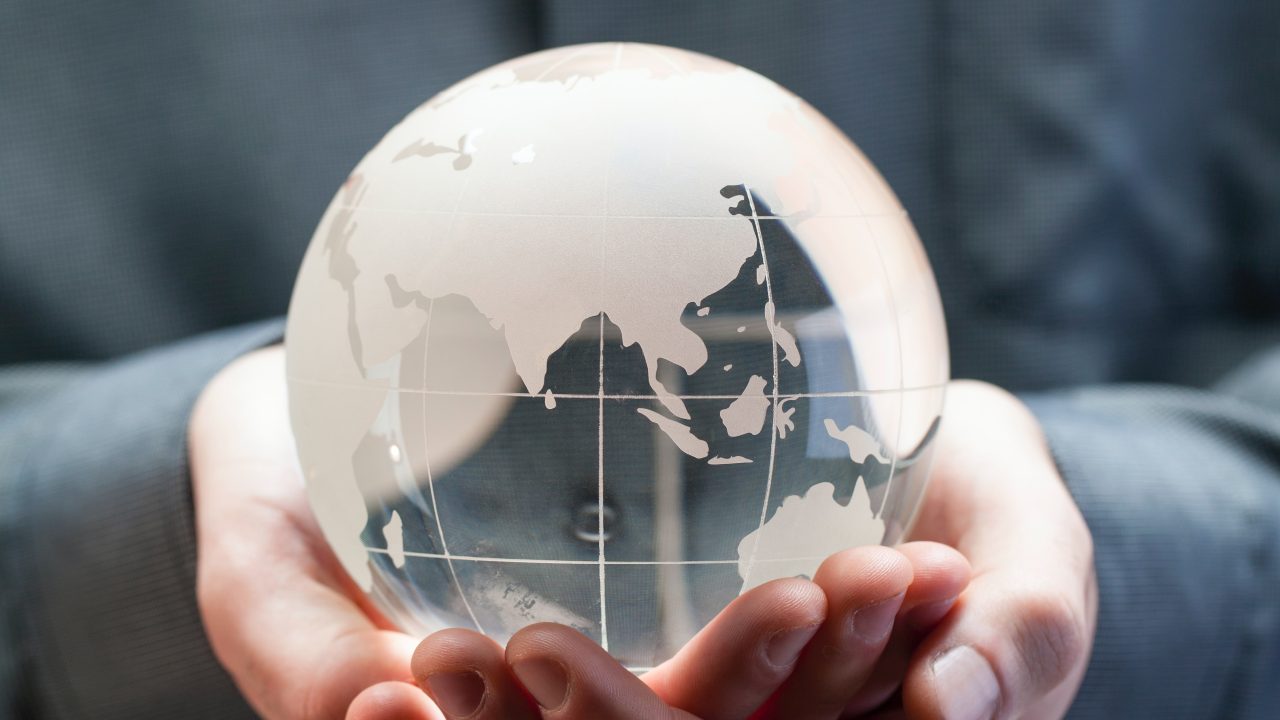Politicians have yet again recognised the need to meet the 1.5 degree Celsius target on climate change – this time at the G20 in Bali. Leaders at the G20 meeting in Bali agreed to ‘pursue efforts to limit the rise in global temperatures to 1.5 degree Celsius’. They also ‘recognised the need to speed up efforts to phase down coal use’ – in a potential boost to the COP27 climate talks. “We resolve to pursue efforts to limit the temperature increase to 1.5°C. This will require meaningful and effective actions and commitment by all countries,” the G20 statement read. But have you ever wondered what the 1.5 degree Celsius target is and why it is important? Let’s take a closer look: What is it? Simply put, countries around the world are trying to limit the average global temperature increase to 1.5 degree Celsius above pre industrial times. World powers first agreed to set this target during a 2015 UN summit in France in a deal known as the Paris Agreement. The 2015 Paris Agreement committed countries to limiting the global average temperature rise to well below 2°C above pre-industrial levels, and to aim for 1.5°C. According to NPR, the 1.5 degree Celsius target was pushed hard by developing nations most at risk due to climate change. At the same summit, the countries also asked industrialised nations, who have emitted most greenhouse gas emissions since the Industrial Revolution, to improve on the 2 degree Celsius goal. While the deal was non-binding, it was nevertheless seen as a major breakthrough in the battle to take on climate change. Why is it important? Because climate change is real and climate change is here.
The world has already heated to around 1.1°C above pre-industrial levels.
Each of the last four decades was hotter than any decade since 1850. While two degrees of difference might not be noticeable for the average human being gauging the weather outside, these small numbers have a huge impact when it comes to global average temperatures. “Every tenth of a degree matters,” is a phrase that climate scientists around the world keep repeating. “The 1.5°C figure is not some random statistic,” Petteri Taalas, the World Meteorological Organisation secretary-general has said. But “rather an indicator of the point at which climate impacts will become increasingly harmful for people and indeed the entire planet.” “We never had such a global warming in only a few decades”, explained climate scientist Daniela Jacob at the Climate Service Center Germany. “Half a degree means much more extreme weather, and it can be more often, more intense, or extended in duration.” How can it be prevented? Sadly, it may not be preventable. Preventing it requires almost halving global CO2 emissions by 2030 from 2010 levels and cutting them to net-zero by 2050 – an ambitious task that scientists, financiers, negotiators and activists at COP26 are debating how to achieve and pay for. Most nations — including the world’s two largest emitters, the US and China — aren’t on track to limit warming to 1.5 Celsius or even 2 Celsius, according to scientists and experts who track global action on climate change, despite promises to cut their emissions to “net zero”. Unfortunately, the probability of temperature at least temporarily exceeding the 1.5°C threshold has only risen in recent years, as per the United Nations. [caption id=“attachment_9884921” align=“alignnone” width=“1280”] Climate change will cause sea levels to rise and displace millions in the developing world[/caption] In 2015, when the Paris Agreement was signed, the chances were close to zero. However, he probability increased to 10 per cent over the past five years, and to nearly 50 per cent for the period from 2022-2026, the report produced by the United Kingdom’s Met Office, the WMO lead centre for climate update predictions, has stated. “Our latest climate predictions show that continued global temperature rise will continue, with an even chance that one of the years between 2022 and 2026 will exceed 1.5 °C above pre-industrial levels,” Dr Leon Hermanson of the UK Met Office, who led the report, said. “A single year of exceedance above 1.5 °C does not mean we have breached the iconic threshold of the Paris Agreement, but it does reveal that we are edging ever closer to a situation where 1.5 °C could be exceeded for an extended period.” What happens if it crosses the 1.5 degree Celsius threshold? Nothing good. Scientists say crossing the 1.5°C limit risks unleashing far more severe climate change effects on people, wildlife and ecosystems. “…our oceans will continue to become warmer and more acidic, sea ice and glaciers will continue to melt, sea level will continue to rise and our weather will become more extreme. Arctic warming is disproportionately high and what happens in the Arctic affects all of us,” Taalas said. “For every increment of global warming, changes in extremes become larger," said climate scientist Sonia Seneviratne at ETH Zurich.
Climate change will cause sea levels to rise and displace millions in the developing world[/caption] In 2015, when the Paris Agreement was signed, the chances were close to zero. However, he probability increased to 10 per cent over the past five years, and to nearly 50 per cent for the period from 2022-2026, the report produced by the United Kingdom’s Met Office, the WMO lead centre for climate update predictions, has stated. “Our latest climate predictions show that continued global temperature rise will continue, with an even chance that one of the years between 2022 and 2026 will exceed 1.5 °C above pre-industrial levels,” Dr Leon Hermanson of the UK Met Office, who led the report, said. “A single year of exceedance above 1.5 °C does not mean we have breached the iconic threshold of the Paris Agreement, but it does reveal that we are edging ever closer to a situation where 1.5 °C could be exceeded for an extended period.” What happens if it crosses the 1.5 degree Celsius threshold? Nothing good. Scientists say crossing the 1.5°C limit risks unleashing far more severe climate change effects on people, wildlife and ecosystems. “…our oceans will continue to become warmer and more acidic, sea ice and glaciers will continue to melt, sea level will continue to rise and our weather will become more extreme. Arctic warming is disproportionately high and what happens in the Arctic affects all of us,” Taalas said. “For every increment of global warming, changes in extremes become larger," said climate scientist Sonia Seneviratne at ETH Zurich.
For example, heatwaves would become both more frequent and more severe.
An extreme heat event that occurred once per decade in a climate without human influence, would happen 4.1 times a decade at 1.5°C of warming, and 5.6 times at 2°C, according to the U.N. climate science panel (IPCC). Let warming spiral to 4°C, and such an event could occur 9.4 times per decade. A warmer atmosphere can also hold more moisture, resulting in more extreme rainfall that raises flood risks. It also increases evaporation, leading to more intense droughts**.** Earth’s oceans, frozen regions at risk The difference between 1.5°C and 2°C is critical for Earth’s oceans and frozen regions. “At 1.5°C, there’s a good chance we can prevent most of the Greenland and west Antarctic ice sheet from collapsing,” said climate scientist Michael Mann at Pennsylvania State University. That would help limit sea level rise to a few feet by the end of the century - still a big change that would erode coastlines and inundate some small island states and coastal cities. But blow past 2°C and the ice sheets could collapse, Mann said, with sea levels rising up to 10 metres (30 feet)- though how quickly that could happen is uncertain. Warming of 1.5°C would destroy at least 70% of coral reefs, but at 2°C more than 99% would be lost. That would destroy fish habitats and communities that rely on reefs for their food and livelihoods. Food, forests and disease Warming of 2°C, versus 1.5°C, would also increase the impact on food production. “If you have crop failures in a couple of the breadbaskets of the world at the same time, then you could see extreme food price spikes and hunger and famine across wide swathes of the world,” said climate scientist Simon Lewis at University College London. [caption id=“attachment_11186441” align=“alignnone” width=“640”] Maryan Madey, who fled the drought-stricken Lower Shabelle region, holds her malnourished daughter Deka Ali, 1, at a camp for the displaced on the outskirts of Mogadishu, Somalia Saturday, 3 September 2022. AP[/caption] A warmer world could see the mosquitoes that carry diseases such as malaria and dengue fever expand across a wider range. But 2°C would also see a bigger share of insects and animals lose most of their habitat range, compared with 1.5°C, and increase the risk of forest fires - another risk to wildlife. ‘Tipping points’ As the world heats up, the risk increases that the planet will reach “tipping points”, where Earth’s systems cross a threshold that triggers irreversible or cascading impacts. Exactly when those points would be reached is uncertain. Droughts, reduced rainfall, and continued destruction of the Amazon through deforestation, for example, could see the rainforest system collapse, releasing CO2 into the atmosphere rather than storing it. Or warming Arctic permafrost could cause long-frozen biomass to decompose, releasing vast amount of carbon emissions. “That’s why it’s so risky to keep emitting from fossil fuels … because we’re increasing the likelihood that we go over one of those tipping points,” Lewis said. What happens after 2°C? If temperatures increase by about 2 more degrees Celsius by the end of the century, the world will experience five times the floods, storms, drought and heat waves, according to estimates by the Intergovernmental Panel on Climate Change. “All bets are off” when it comes to how climate systems will respond to more warming, warned Brown University climate scientist Kim Cobb. The threat of some irreversible changes and feedback loops that amplify warming, such as the thawing of permafrost that traps massive amounts of greenhouse gas, could trigger even more heating. “It’s just staggering to think about how many people will be under immediate threat of climate-related extremes in a two degree world,” Cobb said. So far, the climate pledges that countries have submitted to the United Nations’ registry of pledges put the world on track for 2.7°C of warming. The International Energy Agency said Thursday that new promises if implemented could hold warming to below 1.8°C, although some experts challenged that calculation.
Maryan Madey, who fled the drought-stricken Lower Shabelle region, holds her malnourished daughter Deka Ali, 1, at a camp for the displaced on the outskirts of Mogadishu, Somalia Saturday, 3 September 2022. AP[/caption] A warmer world could see the mosquitoes that carry diseases such as malaria and dengue fever expand across a wider range. But 2°C would also see a bigger share of insects and animals lose most of their habitat range, compared with 1.5°C, and increase the risk of forest fires - another risk to wildlife. ‘Tipping points’ As the world heats up, the risk increases that the planet will reach “tipping points”, where Earth’s systems cross a threshold that triggers irreversible or cascading impacts. Exactly when those points would be reached is uncertain. Droughts, reduced rainfall, and continued destruction of the Amazon through deforestation, for example, could see the rainforest system collapse, releasing CO2 into the atmosphere rather than storing it. Or warming Arctic permafrost could cause long-frozen biomass to decompose, releasing vast amount of carbon emissions. “That’s why it’s so risky to keep emitting from fossil fuels … because we’re increasing the likelihood that we go over one of those tipping points,” Lewis said. What happens after 2°C? If temperatures increase by about 2 more degrees Celsius by the end of the century, the world will experience five times the floods, storms, drought and heat waves, according to estimates by the Intergovernmental Panel on Climate Change. “All bets are off” when it comes to how climate systems will respond to more warming, warned Brown University climate scientist Kim Cobb. The threat of some irreversible changes and feedback loops that amplify warming, such as the thawing of permafrost that traps massive amounts of greenhouse gas, could trigger even more heating. “It’s just staggering to think about how many people will be under immediate threat of climate-related extremes in a two degree world,” Cobb said. So far, the climate pledges that countries have submitted to the United Nations’ registry of pledges put the world on track for 2.7°C of warming. The International Energy Agency said Thursday that new promises if implemented could hold warming to below 1.8°C, although some experts challenged that calculation.
It remains to be seen whether those promises will translate into real-world action.
Warming of 2.7°C would deliver “unliveable heat” for parts of the year across areas of the tropics and subtropics. Biodiversity would be enormously depleted, food security would drop, and extreme weather would exceed most urban infrastructure’s capacity to cope, scientists said. “If we can keep warming below 3°C we likely remain within our adaptive capacity as a civilization, but at 2.7°C warming we would experience great hardship,” said Mann. With inputs from agencies Read all the Latest News , Trending News , Cricket News , Bollywood News , India News and Entertainment News here. Follow us on Facebook , Twitter and Instagram .
)